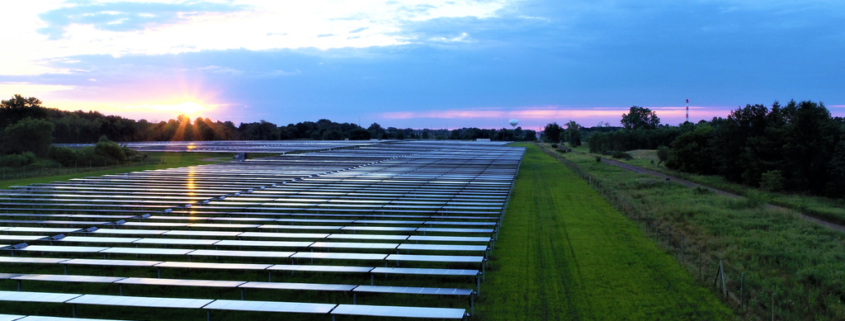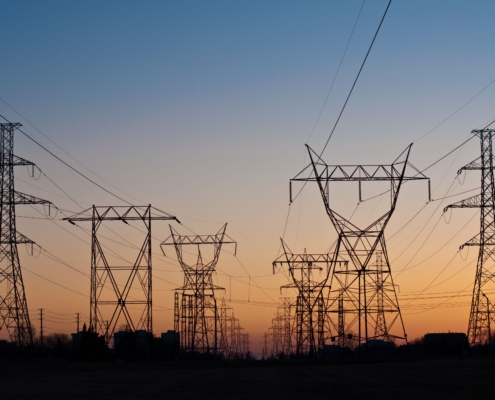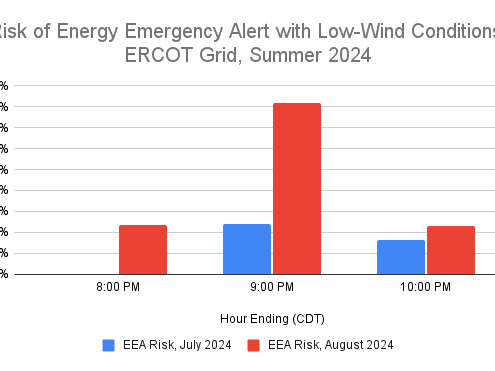Last Updated on May 22, 2022 by Mary Pressler
US Solar Power Production Report 2022
The Solar Energy Industries Association (SEIA) publishes quarterly reports covering the state of the US solar industry, in collaboration with the consulting firm Wood Mackenzie. Their latest report was published on March 10, 2022, providing a detailed industry snapshot for 2021.
- 23.6 gigawatts (GW) of solar capacity were installed in 2021, which represents a 19% increase compared with 2020.
- The US has reached a total capacity of 121.4 GW, capable of meeting the electricity needs of 23.3 million homes.
- Solar PV has been the fastest growing electricity source in the US for three consecutive years: 40% of new capacity in 2019, 44% in 2020, and 46% in 2021.
In spite of the positive outlook, the US solar industry is currently facing two major challenges. Global supply chain disruptions are driving up project costs and causing delays, especially in the utility-scale segment. Fixed-tilt solar farms became 18% more expensive between Q4 2020 and Q4 2021, while solar farms with single-axis tracking became 14.2% more expensive.
The US solar industry will also be losing the Investment Tax Credit after 2023, and the incentive decreases from 26% to 22% after 2022. Growth projections remain strong in spite of this, and the US could reach 464 GW of capacity by 2032.
However, a 10-year extension of the ITC would boost solar installations by 66%, and the US would reach almost 700 GW by 2032. Under this scenario, the US could be installing around 70 GW of solar capacity per year by 2030. The SEIA also estimated the potential benefit of an ITC extension by market segment, reaching the following results:
- 20% increase in home solar installations, representing nearly 13 GW of capacity.
- 15% increase in community and commercial solar installations.
- 86% increase in utility-scale solar farms.
The Home Solar Market Broke Records in 2021
US homeowners installed 514,000 solar PV systems in 2021, with a total capacity of 4.2 GW, which represents a 30% increase from 2020. This is the first time the US installs more than 500,000 home solar systems in a single year.
- Q4 2021 has been the best quarter on record for the home solar market, with 1,156 MW installed.
- Considering the capacity added in 2021, 5% of owner-occupied homes in the US are now equipped with solar panels.
Wood Mackenzie estimated 13% growth in 2022, but a slowdown is expected in California due to the Net Energy Metering 3.0 (NEM 3.0) framework. Solar owners will be getting a much lower credit for surplus electricity sent to the grid, extending the payback period of solar panels to over 10 years. The California home solar market is expected to contract by 45% in 2023 as a result, but the outlook is more promising in the rest of the country, with a growth forecast of 18%.
Community and Commercial Solar Power Is Also Expanding
The SEIA reported 957MW of new community solar capacity in 2021, and 1,435 MW of new commercial capacity. Together, these two nonresidential market segments added 2.4 GW, which also represents a new record. Commercial solar installations had a minor drop of 1% compared with 2020, but this was compensated by a 7% increase in the community solar market.
The NEM 3.0 framework will also affect commercial solar power in California, with a 37% drop in systems installed between 2022 and 2026. However, a 10-year extension of the ITC would lead to a 21% increase in commercial solar installations across the US during the same period.
New York has emerged as the leading state in the community solar market in 2021, with more than 66% of capacity additions during the year. There is a positive outlook in this market segment, and the nationwide community solar capacity could double within five years.
Utility-Scale Solar Farms: The Largest Market Segment in the US
The US installed 17 GW of utility-scale solar capacity during 2021, with 5.9 GW installed only in Q4 2021. Considering new contracts signed during the last quarter, the US solar farm pipeline reached 80.2 GW by the end of 2021.
- Considering the current growth rate, the US could add 123 GW of utility-scale solar power by 2027, and 244 GW by 2032.
- The outlook improves drastically with a 10-year ITC extension, and the growth forecast by 2032 increases to 454 GW.
Supply chain disruptions are currently the main challenge for the utility-scale solar market. Under normal conditions, the US could have installed an additional 3 GW of solar farm capacity in 2021. Unfortunately, around 33% of utility-scale projects scheduled for completion in Q4 2021 were delayed to 2022 or later. Considering these disruptions, the SEIA and Wood Mackenzie are forecasting a 14% drop in new solar farm installations for 2022.
Solar PV System Prices on the Rise at All Project Scales
The SEIA and Wood Mackenzie also analyze average PV system prices across all market segments, considering standard mono-PERC and high-efficiency modules. The solar industry has also been affected by high inflation, and this is evident when comparing average costs per watt for Q4 2020 and Q4 2021:
| Solar Market Segment | Q4 2020 Price | Q4 2021 Price |
| Residential | $2.97 per watt | $3.10 per watt |
| Commercial | $1.36 per watt | $1.55 per watt |
| Utility, fixed tilt | $0.80 per watt | $0.94 per watt |
| Utility, single-axis tracking | $0.93 per watt | $1.06 per watt |
Electricity prices have also been increasing throughout the US, which means the savings achieved by solar panels are also higher. In spite of recent price increases, solar power continues to offer an attractive ROI for many homes and businesses.
According to the SEIA report, rising solar prices can be attributed to several factors: increasing equipment costs, increasing raw material and freight costs, and skilled labor shortages. Solar farms are more susceptible to supply chain issues, since they depend greatly on imported modules. To compensate for higher prices, developers have been using more bifacial and large-format modules, combined with single-axis tracking systems. This configuration maximizes the electricity output per module, and the overall efficiency of a solar farm.
Texas Installed Over 6 GW, Becoming the Top Solar Market
Texas added 6,060 MW of solar power in 2021, which represents 25% of total capacity added during the year. Texas is the top solar market for the first time on record, while California is now in second place with 3,640 MW.
Top Ten Solar States 2022
The following table lists the top 10 solar states based on new generation capacity added in 2021, comparing them with 2020:
| State | 2021 Solar Installations | 2020 Solar Installations | 2020 Rank |
| 1) Texas | 6,060 MW | 3,426 MW | #2 |
| 2) California | 3,640 MW | 3,917 MW | #1 |
| 3)Florida | 1,660 MW | 2,827 MW | #3 |
| 4)Virginia | 1,450 MW | 1,406 MW | #4 |
| 5)Georgia | 1,203 MW | 593 MW | #7 |
| 6)Indiana | 1,142 MW | 66 MW | #32 |
| 7)North Carolina | 770 MW | 786 MW | #5 |
| 8)New York | 656 MW | 544 MW | #8 |
| 9)Nevada | 639 MW | 316 MW | #15 |
| 10)Illinois | 541 MW | 349 MW | #13 |











